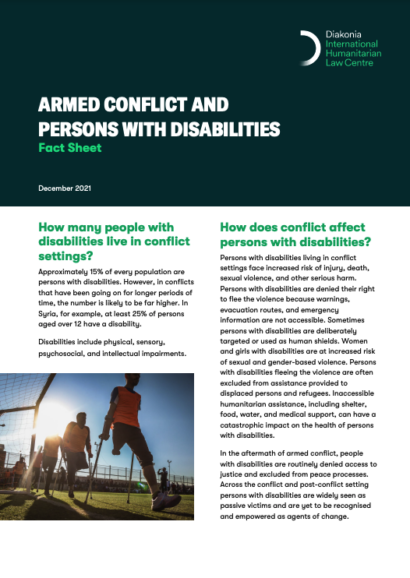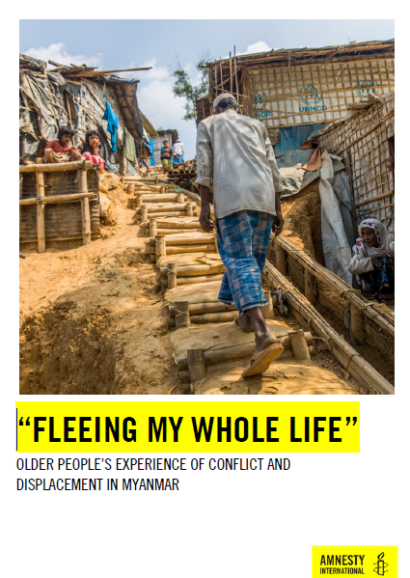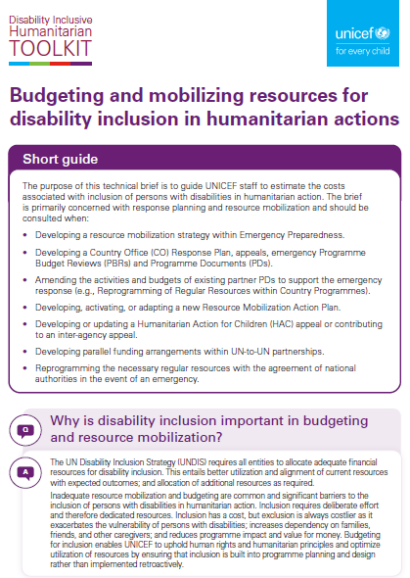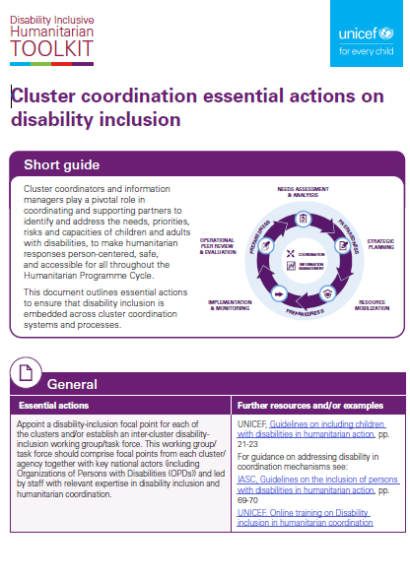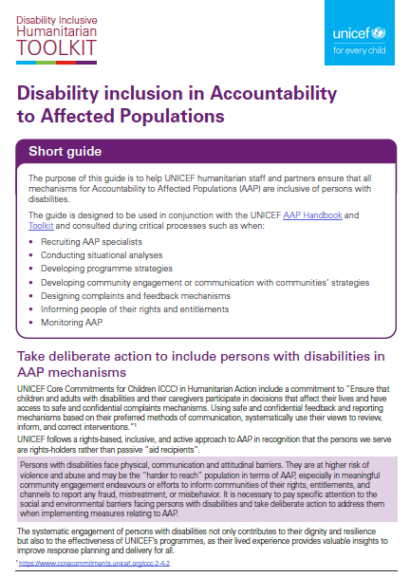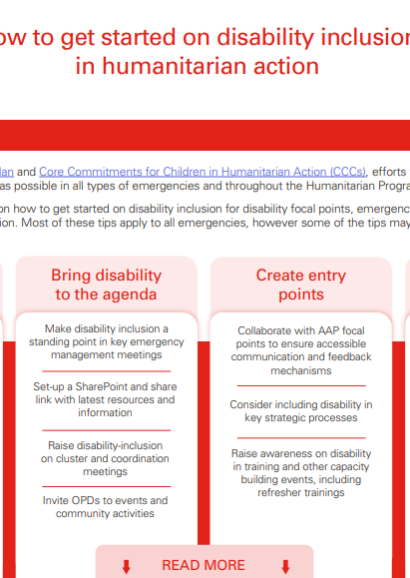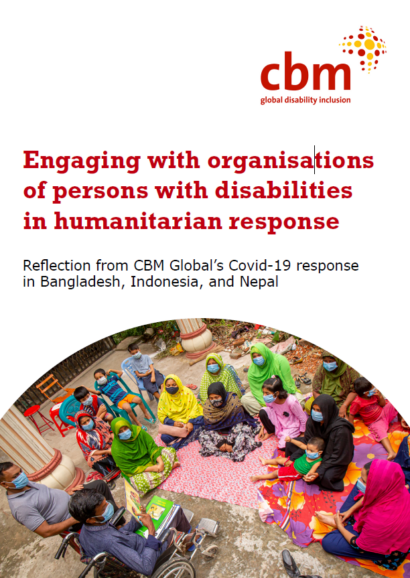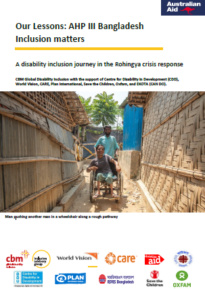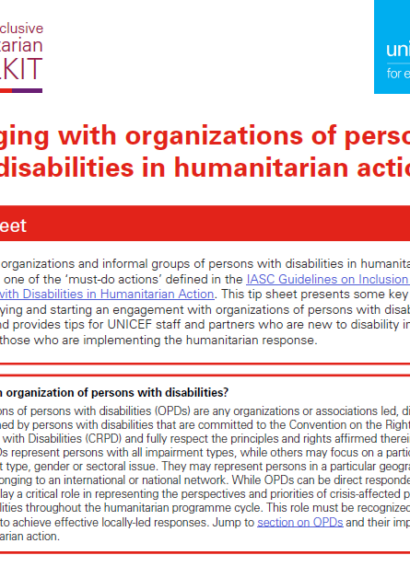Diakonia International Humanitarian Law Centre (2021) Armed Conflict and Persons with Disabilities: Fact Sheet
A fact sheet on armed conflict and persons with disabilities.
Amnesty International (2019) Myanmar: “Fleeing my whole life”: older people’s experience of conflict and displacement in Myanmar.
This report shares the experiences of older people affected by conflict and oppression in Myanmar.
UNICEF (2022) Budgeting and mobilizing resources for disability inclusion in humanitarian actions
This resource is a short guide to support humanitarian programs and responses to ensure disability inclusion is adequately budgeted and resourced for.
UNICEF (2022) Cluster coordination – essential actions on disability inclusion
This document highlights the crucial role of cluster coordinators and information managers in coordinating and assisting partners to address the needs of people with disabilities.
UNICEF (2022) Disability inclusion in Accountability to Affected Populations
This guide assists humanitarian actors to ensure the inclusivity of Accountability to Affected Populations (AAP) mechanisms for people with disabilities.
IASC (2019) Inclusion of Persons with Disability in Humanitarian Action
These guidelines produced by the Inter-Agency Standing Committee (IASC) in 2019 set out what humanitarian actors must do in order to identify and respond to the needs and rights of people with disabilities in humanitarian settings.
UNICEF (2023) How to get started on disability inclusion in humanitarian action
This short guide outlines basic steps on how to get started on disability inclusion in a humanitarian context for disability focal points, emergency focal points, and staff engaged in humanitarian coordination.
CBM Global (2022) Engaging with organisations of persons with disabilities in humanitarian response
This brief captures CBM Global's learnings from engaging with OPDs in humanitarian response during the COVID-19 pandemic.
CBM Global (2023) AHP III Bangladesh: A disability inclusion journey in the Rohingya crisis
This report documents achievements and lessons learned and presents recommendations to progress disability inclusion further in the Rohingya response and for the humanitarian sector at large.
UNICEF (2022) Engaging with Organisations of Persons with Disabilities in humanitarian action
This tipsheet highlights the importance of involving organisations and informal groups of people with disabilities in humanitarian efforts, as outlined in the IASC Guidelines on 'Inclusion of Persons with Disabilities in Humanitarian Action'.

